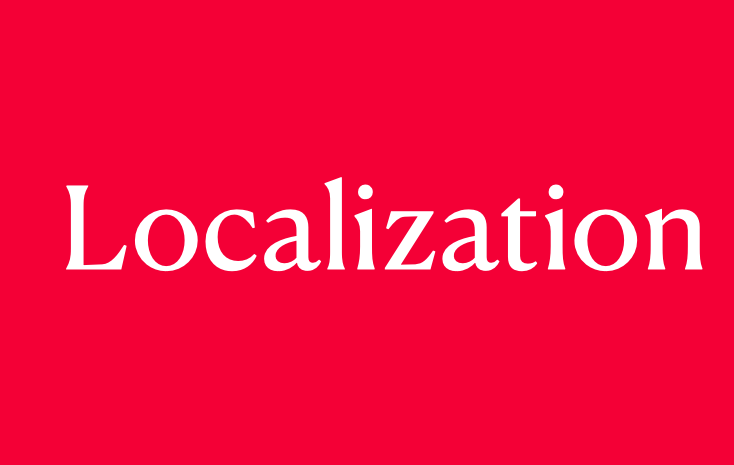Have you ever wondered how web applications localization can magically transform and adapt to different languages and cultures?
How do you watch content from Netflix in your language here in India even though it is an American company based in Los Gatos, California? That’s all possible due to web application localization.
Web application localization is a boon to binge-watchers like us. From e-commerce platforms to social media networks, web applications have revolutionized the way we communicate, conduct business, and access information.
The power of web application localization has no bounds. With users spanning across the globe, catering to a diverse audience has become crucial.
In this blog post, we will delve deeper into the world of web application localization, exploring the web localization process. So, fasten your seatbelts as we embark on a journey to unlock the world through the power of web application localization.

What is Web Application Localization?
Web application localization is the process of adapting a web application or mobile app to suit the linguistic, cultural, and functional requirements of specific target markets.
International Journal of Engineering Research & Technology (IJERT) has also shed some light in their research paper on Localization of Websites. It involves translating and customizing the user interface, content, and features of the application to cater to the preferences and expectations of users in different target markets.
The localization process involves various steps, such as translating the user interface, adapting content to cultural nuances, and tailoring functionalities to meet regional preferences. Web applications provide much more content than mobile apps, so there is a large amount of content to be translated, hence making it much more expensive.
Overview of the Web Application Localization Process
Once you understand web application localization and how it plays an essential role in today’s world. Now, we will head over to the web application localization process. Here, we have curated a list of web application localization processes.
1. Planning for the Web Application Process
The first and most essential step is the identification of the target markets and languages you wish to localize your web application. This is done by conducting thorough market research to understand the cultural preferences, linguistic nuances, and regulatory requirements of each target market.
2. Creating a Dedicated Team
Web application localization is a complex process, so it is essential to involve dedicated team members to ensure that the localization project gets completed smoothly.
These team members include a localization manager, a development team for the development process. A team of native translators, and quality assurance engineers who look after the localization process to remove bugs and glitches.
3. Content Analysis
It is an essential step to analyze the content of your web application to determine the scope of localization. Content analysis for a web application involves examining and evaluating the textual, visual, and multimedia elements within the app to ensure clarity, relevance, and effectiveness.
So it is essential to identify all elements that need to be translated such as user interface(UI) text, images, forms, menus, and any other interactive components.
4. Automating the Process for Efficiency and Accuracy
Automating the web application localization process has revolutionized the way businesses reach global audiences. There are many software that streamline the web application process like translation management systems, CAT Tools, and translation memory.
These automation tools enable seamless extraction and translation of content, eliminating the need to complete the process manually. All these tools save time and also ensure the message remains consistent across all the content.
5. Use of the Correct Translation Management System
The correct translation management system(TMS) is essential for efficient and accurate website localization workflows. By using a translation management system, businesses and language service providers can significantly improve their translation efficiency.
It reduces costs, and ensure consistency and quality across all localized content. TMS enables project managers to easily assign tasks, monitor progress, and track localization progress, resulting in project completion and timely delivery.
6. Internationalization of Website
Website internationalization is a crucial process in developing a web application that aims to cater to a global audience. It involves adapting the website’s design, content, and functionality to accommodate multiple languages, cultures, and locales.
The internationalization process begins with the careful selection of technologies and frameworks that support multilingual capabilities.
Also, includes using character sets that can handle various scripts, implementing language and locale detection mechanisms, and providing support for right-to-left languages. Businesses using the website internationalization process effectively reach larger global audiences and enhance user engagement.
7. Localization of User Experience(UX) and User Interface(UI)
Localizing the user experience (UX) and user interface (UI) for a web application involves adapting the design, content, and functionality to meet the cultural and linguistic preferences of specific target markets.
The process begins with conducting thorough research and understanding the target audience’s cultural norms, preferences, and expectations. This includes considering language, visual design, symbols, colors, and even local regulations and laws.
8. Testing the Localized App
Testing before launching a web application is a crucial step to ensure its functionality, performance, security, and user experience meet the desired standards.
The testing process typically involves multiple stages, starting with unit testing where individual components and modules are tested in isolation to identify any bugs or errors. Integration testing follows, where the interaction between different components is tested to ensure they work together seamlessly.
9. Marketing the Localized Web Application
One of the last steps in this web application process is marketing. It is a crucial step to attract potential clients.
This step of marketing is done by creating compelling marketing messages that emphasize the benefits of localized web applications. Such as improved user experience, expanded global reach, and increased engagement with target audiences.
Why should you choose Naarg for Web Application Localization Services?
We at Naarg assist you in introducing your app to prosperous countries, helping you gain better deals.
We are a professional application localization company with hundreds of native linguists at its services. We strategically devise the content clearly and crisply that appeals to the customer.
As a reliable app localization agency, we provide an improved customer experience so your app can get 5-star reviews. Need a hand in localizing your website? Naarg Data Media Services can help you with your localization services.
Reach us at info@naargmedia.com to learn more about translation and localization services.

